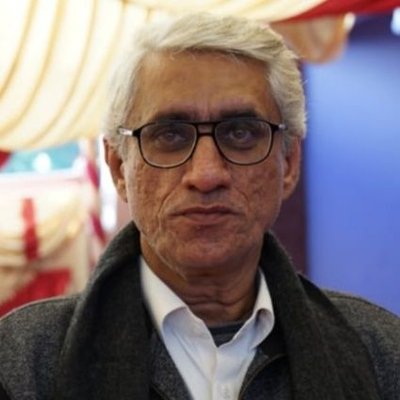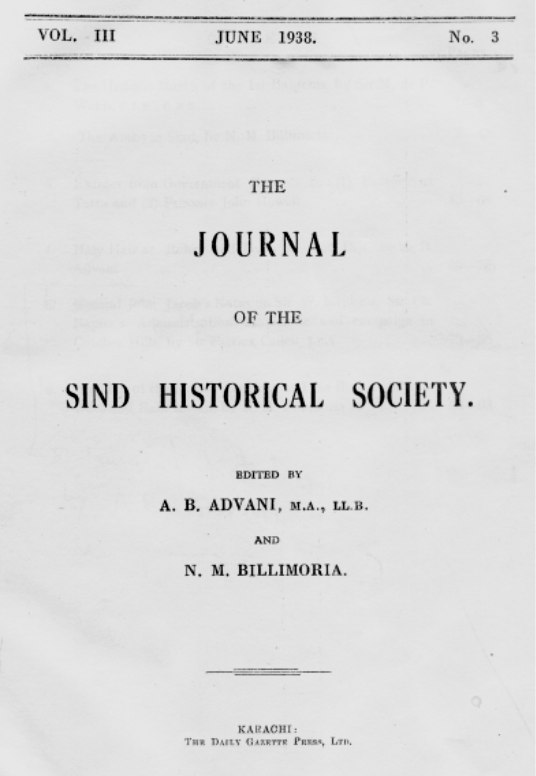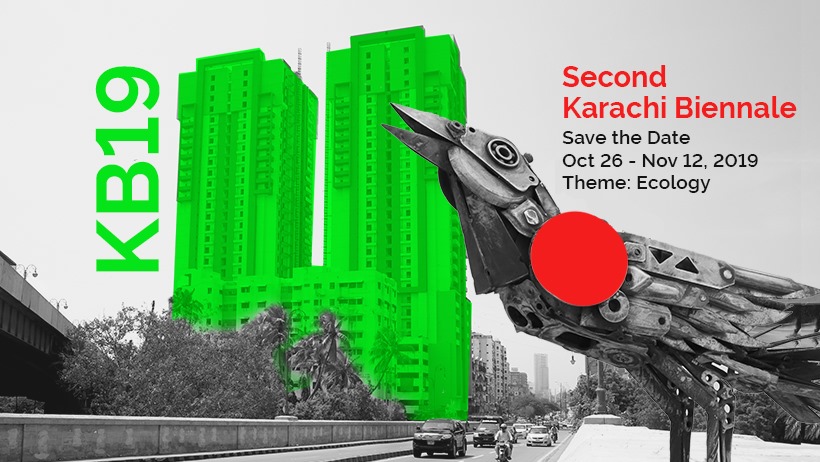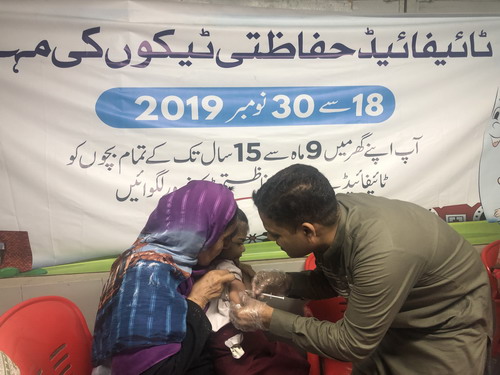By Muhammad Habib Sanai
According to the veteran historian Dr. Mubarak Ali, “The modern historiography of Sindh was introduced during the British rule when the Historical Society of Sindh was founded with the purpose of reconstructing the history of Sindh. The Society published a historical journal, which contained well-researched papers, thus contributing immensely to recording the history of Sindh. Sadly, the Society and the journal discontinued after Partition.”
The Society’s most active office bearer and also prolific contributor in the Journal was Mr. N. M. Billimoria. From the list of contents of all issues of the Journal, I gather that he had contributed more than 35 essays on the history of Sindh, whose topics range from the early period to the modern period. Journal also published extracts pertaining to Sindh from the Annual Bibliography of Indian Archaeology, without any byline, which, I understand, were his contributions. His five essays have been republished in the above-mentioned two anthologies.
Besides writing research papers, he also edited the Journal along with A.B. Advani. This arrangement lasted until the 23rd issue, which was published in February 1943. In the 24th issue, his co-editor A.D. Advani was replaced by Prof. M.R. Mankad. However, from the 25th issue to the last one, the Editorial Committee replaced Editors, but Billimoria remained in the Editorial Committee.
He was also an active office bearer of the Society till its dissolution in January 1948. In the year 1934, he was elected as a member of the Managing Committee, but in the second year (1935), he was elected as Honorary Secretary and Treasurer. Since then he was re-elected as Honorary Secretary and Treasurer for various years. According to renowned Sindhi writer and researcher Mr Mukhtiar Ahmed Malah, during the last years, he also worked as the President. However, as the Secretary and Treasurer of the Society, he prepared annual reports and accounts statements, some were also published in the issues of the Journal.
He attended annual sessions of the Indian Historical Congress held in various cities of India and also presented his research papers. He was awarded a silver medal by Bhartia Vidya Bhawan on his paper during the year 1943.
From the online search, it is gathered that his two books 1) Bibliography of publications relating to Sind & Baluchistan (Last edition 1980) and 2) The Script of Mohenjo Daro and Easter Island (1940) were published.
Famous Sindhi historian and researcher Dr. Dur Mohammad Pathan tells me that Mr. Billimoria was also an office bearer of the Sindh Natural History Society, which was established on May 31, 1927. This Society started its quarterly Journal of Sindh Natural History in 1929, which was edited by N.M. Billimoria. That journal carried articles about nature, flora and fauna of Sindh. He also contributed essays for this Journal, however, the extent of his scholarly endeavours in this Journal is not known. According to Dr Pathan, all issues are available in his Gul Hayat Institute, located in Khair Mohammad Areja Village of District Larkana.
Unfortunately, details about the personal life and education of such a high-calibre historian and archaeologist are still in the dark. According to Mr. Malah, Billimoria was perhaps a teacher in a Parsi School and used to live on Marston Road in Karachi.
This write-up is written with the hope that someone may come with more details of his life and achievements. A list of his contributions in the Journal of Sindh Historical Society is appended for further research etc.
- Alexander Hamilton’s description of Sind (1699-1700)
- Three Ancient Travelers
- Major General E.C. Marston
- Rai Chach and his family
- The Arabs in Sind
- Legends of Old Sind
- Inscription on the tomb of Abu Turab in Sindh, with two illustrations
- Was Akbar Literate?
- Religious Opinions of Emperor Akbar
- Some ancient tribes of Sapta Sindhu
- Chinese Buddhist Pilrgirms in India
- Death of Sir Aurel Stein
- The Brahuis
- DiulSind. The Old Port of Tatta
- Ancient Sind
- Identification of some old places in Ancient Sind (with maps)
- Excavations of Pre-Historic Places in Sind
- Tombs of Two Europeans at Tatta
- The Iranians in Ancient India, especially in Sindh and the Punjab
- Ibn Haukal’s Account of Sind
- The Panis of Rig Veda and Script of Mohenjo Daro and Easter Island
- Worship of the Mother Goddess and Bull at Mohenjo Daro and Baluchistan
- Sapta-Sindhu in Rig Veda
- Life of Ch. Mason and Mason’s Notes on Karychee (1830)
- New light on Sind History
- The Sassanians in Sind
- The Jats, A tribe in Sind
- The Iranians in Sind
- The Sumra and Summa Dynasties in Sind
- The devastation caused by the Indus in the 19th Century. A severe earthquake felt on the frontier of Upper Sind on 24-1-1852
- Census Reports of Sind for the years 1931 and 1941
- Hinglaj, an ancient site of pilgrimage in the Las Bela State
- The Great Indian Desert with Special reference to the former existence of the sea in the Indus Valley (With two maps)
- First Arab Expeditions to India
- General Orders of Sir Charles Napier, 1843-47
- Indian Historic Congress, Fifth Session 1941 Hyderabad Deccan, the Osmania University, Ellora and Ajanta Caves
- Emperor Akbar and Zoroastrians
- Criminal Tribes in Sind
- Sind the Satrapy of Iran
About the author:




